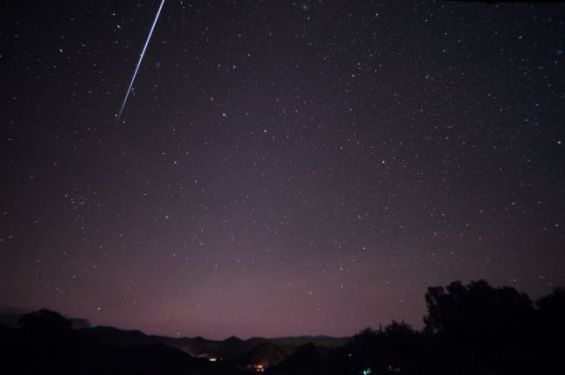On Sunday, April the 14th, a fireball was spotted near the Moroccan coast. The phenomenon was recorded in the framework of the SMART project (University of Huelva), created to detect meteoroids interacting with the Earth’s atmosphere, Meteor News reported.
«It was produced by a meteoroid from the Virginids that hit the atmosphere at about 65,000 km/h», the scientific platform added.
Speaking to Yabiladi on Tuesday, Spanish astrophysicist José María Madiedo who is part of the SMART project said that the fireball that flew over the Mediterranean «was produced by a rock detached from an asteroid».
Calar Alto registró bola de fuego sobre Mediterráneo esta madrugada 14 de abril. Se produjo al entrar en la atmósfera una roca procedente de un asteroide a una velocidad de 40 mil kilómetros por hora. Fue vista desde casi 500 kilómetros de distancia. Project Smart @jmmadiedo pic.twitter.com/Sv4sBGJEt9
— Amigos Calar Alto (@amigos_calar) April 14, 2019
Explaining the phenomenon that occurred on Sunday, Madiedo told Yabiladi that the above-mentioned rock «hit the atmosphere at 40,000 kilometers per hour». «At that huge speed, the temperature of the rock increased immediately at about 4000 degrees Celsius, and that originated the fireball», he pointed out.
A recurrent phenomenon
According to the scientist, having the fireball hit the sea was not dangerous, as the rock was «destroyed in the atmosphere», which acts as a shield that protects the planet from similar objects. Observing fireballs since 2005, Madiedo indicated that after being almost completely destroyed on its way to earth, a very small fragment of the rock might have «survived».
«There is the chance that a few grams could survive. In that case, the surviving mass fell into the sea, at about 25 km from the coasts of Morocco».
The scientist revealed that these fireballs occur frequently. He stressed that these fireballs «appear when fragments detached from asteroids or comets cross the Earth's orbit around the sun», adding that «if the rock that gave rise to the fireball recorded on April 14 landed on earth, it would have no effect because its size was very small».
Speaking about the phenomenon in Morocco, the astrophysicist explained that «meteorites can be found more easily in deserts, since they are dark rocks that are very well contrasted against the desert sand». However, he pointed out that in areas with more vegetation and mountains finding them gets «more difficult».
«This can explain why more meteorites can be found in some provinces compared to others», he concluded referring to the Kingdom’s southern provinces.





 chargement...
chargement...













